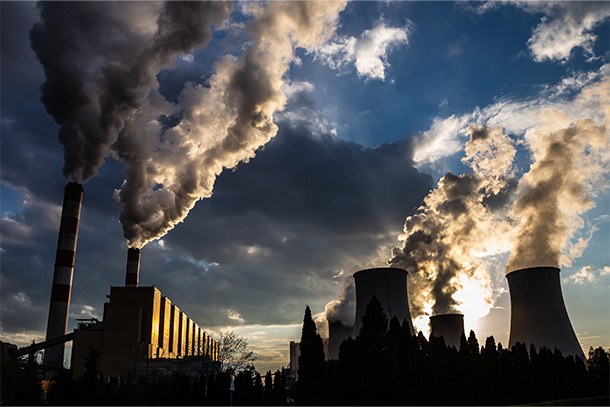
In Nature Sustainability, a Penn State-led team of researchers found countries and regions that limited industry emissions and had declining fossil fuel use had lower pollution concentrations. However, lower pollution concentrations alone did not lower the projected number of deaths. Credit: iStock: FOTOFORCE. All Rights Reserved.
Population aging, economic status may amplify air pollution health impacts
Researchers find population aging and low baseline mortality rates most impact outcomes
October 24, 2022
By Mariah Chuprinski
UNIVERSITY PARK, Pa. — Population aging and economic development setbacks may outpace the health benefits of less air pollution and slowed climate change, according to a Penn State-led researcher team examining air quality and the factors most likely to impact future premature deaths.
The team used past and projected data to model five future scenarios estimating premature deaths due to air pollution and identified areas of the world that could be the most impacted. They published their findings today (Oct. 24) in the journal Nature Sustainability.
“When we think about the pollution impacts on future populations, exposure to ambient particulate matter — or air pollution — caused by fossil fuel emissions, is the greatest threat to global health,” said principal investigator Wei Peng, assistant professor of civil and environmental engineering in the Penn State College of Engineering and of international affairs in the Penn State School of International Affairs. “The health burden is unevenly distributed across countries and disproportionately borne by the global south. To make credible projections of future global health, we created an integrated modeling framework that combines air quality simulations with macro-level sociodemographic drivers like global population and economic development.”
The researchers integrated data from the World Climate Research Programme’s Scenario Model Intercomparison Project with the National Oceanic and Atmospheric Administration’s (NOAA) Geophysical Fluid Dynamics Laboratory to estimate how changing socioeconomic trends and climate mitigation efforts may influence global fossil fuel use and resulting air quality.
The resulting model estimated pollution exposure levels and the number of premature deaths with varying values of pollution control, socioeconomic trends and climate warming over the years 2015 to 2100. In all five scenarios, researchers found countries and regions that limited emissions and had declining fossil fuel use had lower pollution concentrations.
However, lower pollution concentrations alone did not necessarily lower the projected number of deaths. According to Peng, aging and declining baseline mortality — the natural death rate unrelated to air pollution — were better predictors of premature deaths than exposure to air pollution alone.
“Emerging markets like China and India contribute to less than half of the global carbon emissions, but they suffer from 60% of the world’s health damage due to air pollution,” said Hui Yang, Penn State doctoral student in civil and environmental engineering and first author on the paper. “That is partly because they do not have sufficient end-of-pipe controls, or effective regulations controlling how much emissions industries can release to the air.”
In most future scenarios, China and India account for the highest estimated premature death numbers, the researchers found. Peng said this is likely the result of higher rates of exposure due to the lack of controls, combined with an aging population that is more vulnerable to pollution exposure.
“Areas with unsatisfying socio-economic conditions and limited access to health care tend to have higher baseline mortality rates,” Peng said. “If you couple that with an aging population, death rates go up. If we do more to clean the air and put limits on emissions, we have a chance to have a different future, to fight against some of the negative health effects of sociodemographic changes coming our way.”
Co-author Dan Westervelt, Lamont Assistant Research Professor at Columbia University, said their modeling framework can inform societies’ next steps in mitigating the impacts of air pollution.
"Understanding the potential pathways of future air pollution and associated health burden using Earth system models is critical for crafting effective mitigation strategies,” he said. “This work sheds new light on untangling the impacts of emissions, climate change, exposure levels and socio-demographic factors in determining the future health burden from air pollution.”
Other co-authors include Xinyuan Huang, Penn State Department of Civil and Environmental Engineering, and Larry Horowitz, NOAA Geophysical Fluid Dynamics Laboratory.
The National Science Foundation and a seed grant from the Penn State-Monash Collaboration Development Fund supported this work.



